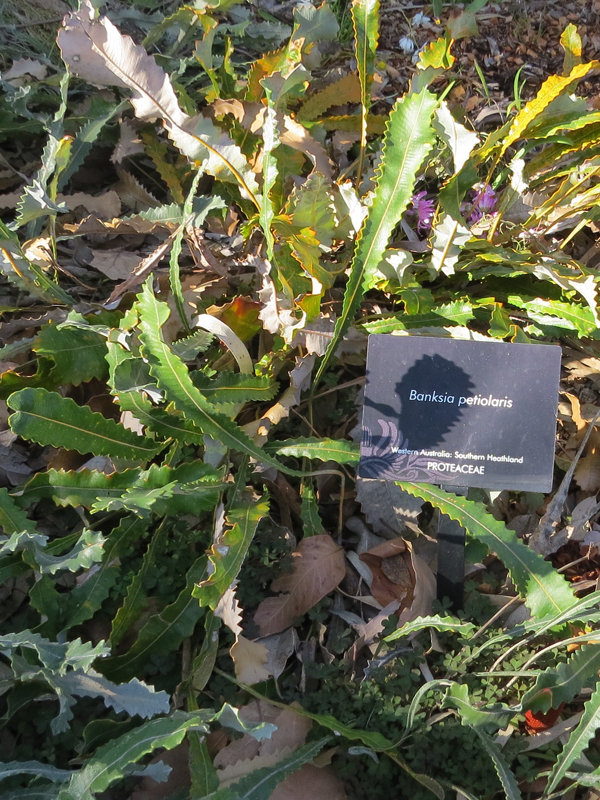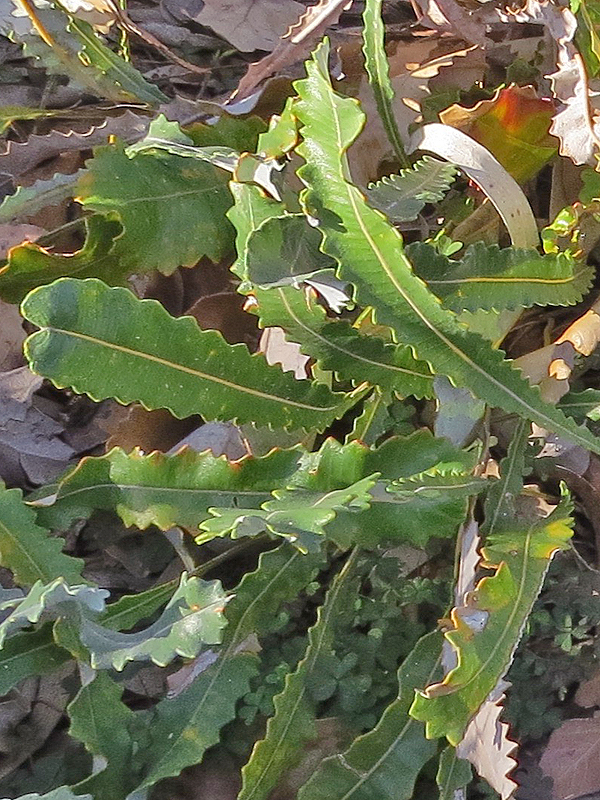| Shape | Upright. |
| Landscape | Ground cover and rock gardens. |
| Propagation | Seed. |
| Cultivation | Well-drained soil, preferably sand with Full sun and partial-shade. It can grow in very alkaline soils. Tolerates light frost. |
| Notable Specimens | Kings Park and Botanical Garden, Perth, Australia. |
| Leaf Description | Alternate leaves that are petiolate and range in size from 21.5 - 34.5 cm long by 2 - 3 .5 cm wide with a petiole of about 5 - 9 cm. The leaf is pinnately divided with shallow teeth pointing towards the apex with flat margins and 29 - 37 lobes on each side. |
| Flower Description | The flowers are made up of a perianth (the outermost part of the flower) that is covered with yellow limb apex hirsute (long, rough, and coarse hairs), and is 1.8 - 2.0 cm long. The pistil (female organ of the flower) is glabrous (free from hair), curved, and is 2.8 - 3.0 cm long. |
| Fruit Description | Banksia petiolaris bears tomentose, elliptic follicles that are 2.8 - 3.0 cm long. |
| Colour Description | Inflorescences are yellow. |
| Texture Description | The leaves are leathery in texture. |

